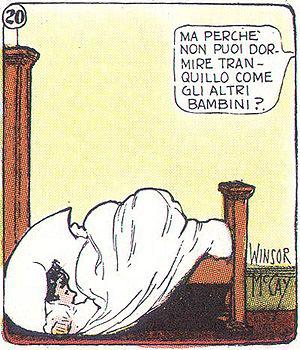To learn Italian language does not mean you have to eventually learn it overnight. You and I both know that this language, along with the other famously known foreign languages, takes time. It doesn’t happen overnight. In fact, it is effectively learned over time.

- image via wikipedia
That’s why you should not be in a hurry in learning this language; though technically, you may want to speed up the learning that is fine actually. As long as you can catch up with the pace, then go ahead. There are intensive Italian courses available particularly in a foreign language school; you may want to take that option. But for those learners who want to be gradual with their Italian language learning, learning one lesson at a time is enough for a day.
And one of the lessons you may tackle during your Italian classes is constructing the simple sentences of the language. Let yourself be reminded that learning these is honestly simple. We just mention that these are simple sentences, right? Don’t let our minds complicate it. J
Anyway, just like the English language, Italian has the basic sentence structure like subject-verb-object. Through these examples provided, you will see how the structure works:
- Carla parla inglese. (kahr-lah pahr-lah een-gleh-zeh)
(Carla speaks English.)
- Pietro ha una macchina. (pee-eh-troh ah oo-nah mahk-kee-nah)
(Pietro has a car.)
According to Dummies, a major difference between English and Italian is that Italian doesn’t usually put the subject before the verb when the subject is a personal pronoun, such as I, you, he, she, and so on. It may sound strange but the verb changes according to its subject. As a result, you eventually understand who the subject is if you then know the different verb forms.
Example: Ho una macchina (oh oo-nah mahk-kee-nah) means “I have a car.”
Allow yourself to be educated with the conjugation pronunciation provided below so we can know the subjects.
io ho
ee-oh oh
tu hai
too ah-ee
lui/lei ha
loo-ee/lay ah
noi abbiamo
noh-ee ahb-bee-ah-moh
voi avete
voh-ee ah-veh-teh
loro hanno
loh-roh ahn-noh
Here are more lists of sentences as examples. Let these be your guidelines.
- Ho un cane. (oh oon kah-neh)
(I have a dog.)
- Hai un cane. (ah-ee oon kah-neh)
(You have a dog.)
- Luca ha fame. Mangia una mela.
(loo-kah ah fah-meh mahn-jah oo-nah meh-lah)
(Luca is hungry. [He] eats an apple.)
Is it easy? I hope the listed sentences that served as examples will help you improve your Italian language learning. Enjoy!

